Science Project on “AIR PRESSURE”,. Class 9 & 10 Science Project
Try this experiment. Place a long, thin, wide stick flat on the table, with about 8 inches sticking out over the table edge. The kind of wood used in fruit crates is excellent for this experiment. Cover the part of the stick on the table with two sheets of large size newspaper. Smooth out the paper. Now hit the end of the stick hard with another stick, or a hammer.
You would surely expect the paper to give way. But to your surprise the stick breaks instead. Why does the stick break sooner than the paper?
The answer has something to do with air. Let’s try some experiments to find out how air helped break the stick.
Air—A Real Material
Would you like to see ail? Try this experiment. Tilt an “empty” up-side down glass under water in a pot, as shown in the drawing. Air bubbles rise to the top of the water. And as the air gets out, water goes into the glass. Actually the glass was not empty at all. It was filled with real material—air.
You can also feel air when it is moving; Notice how the air pushes against you when it is windy. Or, feel the rush of air against your face when you open a vent in a moving car.
You can now see why your stick broke. What seems to be empty space above the newspaper is really filled with air. This air will get out of the way if you push it slowly. But when you try to push it out of the way fast, it resists.
When you hit one end of the stick hard, that end went down and the other end tried to move up, like a seesaw. Because of the spread-out paper there was much more air to push than with the piece of wood alone. Thus the air above the newspaper held the wood down and you were able to break the part sticking out over the edge of the table.
Ordinary materials like wood. steel, and bread have weight. Does air have weight? You can show that it does by weighing it with the kind of homemade scale shown in the drawing. Coat hanger wire is good for making this scale. Adjust the balance by sliding the thread holding the nail, along the wire, back and forth. When the wire is almost horizontal, mark its position along a stick, as shown.
Now let the air out of the balloon by prying the paper clip open. The balloon side of the wire rises slightly, showing that the air you let out had weight.
An Ocean of Air
Could air crush a metal can? Try this.
Get a pint or quart can that has a small screw cap. Clean out the can. heat about half a cup of water in the can, on the hot plate. (Be careful). It’s hot). Let the water boil for about a minute. Shut off the heat and quickly cover the can tightly with its cap. Wear safety gloves and carry it to the sink using a stick or pliers. Pour cold water on the can. It collapses as though run over by a truck! Why?
CAUTION: Wash the can thoroughly with water and a detergent – do not use open flame.
We live at the bottom of an ocean of air, about 100 miles high. The earth’s gravity pulls the air down, just as everything else on earth is pulled down. Even though air doesn’t weigh much, as compared with other materials, an ocean of air certainly weighs a great deal. The weight of the pile of air above us causes air pressure that is great enough to crush the can.
But why didn’t air pressure crush the can without being heated to make steam? The weight of air above us forces the air into every tiny space it can find. With the screw cap removed, air enters the inside of the can and fills it up, pushing outward just as hard as the air outside is pushing inward. So the forces balance each other and nothing happens.
The same thing happens inside your lungs. The air inside pushes outward to balance the push of the air outside. So, no damage is done to your body by the air pressure.
But when you boiled the water, steam pushed out some of the air. You then closed the top and kept the air from returning. As the can was cooled, the steam changed back to water, leaving less air pressure inside the can than before. The greater outside air pressure then crushed the can.
Fill a soda or juice bottle with water and turn It upside-down in water in the sink, or in a large pot. You may be surprised that the water does not fall out of the opening at the bottom. It is being held up by air pressure pushing down on the water surface
What would happen if the bottle were 50 feet tall instead of only one foot? This has been tried, except that a long narrow tube was used instead of such a clumsy bottle. Scientists found that air pressure was able to hold up the water in the tube only if it was less than 34 feet tall. When the tube is made taller the water simply remains at the 34 foot level and doesn’t go any higher.
What’s in the empty space at the top of the tube? Nothing! We call such an empty space wit in it, a vacuum.
When mercury, a very heavy liquid, is used instead of water in the tube the liquid goes no higher than about 30-inches. What is happening? Air pressure on the surface of the liquid is only strong enough to hold up a certain amount of liquid. It holds up a much smaller height of mercury than water because mercury is many times heavier than water. We have just described a mercury barometer, an instrument used to measure air pressure. If the mercury level rises a bit we know that the air pressure has increased, because it can hold up more liquid. If the level drops, the air pressure must be lower because it holds up less liquid. Scientists refer to the air pressure as a certain number of “inches of mercury’. Thus, a weather report might say that the pressure is “29.56 inches of mercury, and rising”. Air pressure is also measured in “pounds per square inch”. Normal air pressure is 14.7 pounds per square inch. This pressure holds up 29.92 inches of mercury.
Changes in air pressure give us an idea as to what kind of weather is coming. Why?
The kind of weather we have depends mainly on the kind of air around us. Warm, moist air usually brings cloudy or rainy weather. Cool, dry air usually brings fair weather.
Since cool, dry air is heavier than warm, moist air; it causes a higher air pressure. Therefore, when the barometer goes up it is a good sign that the weather will improve. And when it goes down, this means that the weather may get worse.
The Aneroid Barometer
You can make a simple aneroid barometer (barometer without liquid) in this way. Use a tall glass jar with a wide mouth. Cover the open end with rubber cut from a balloon. Seal the air in the jar by smearing the outside edge of the jar, and the part of the rubber that touches it with rubber cement. Wind a string several times around the rubber and tie it to make a tight seal.
Then cement a long straight broom straw, soda straw or thin wire to the rubber, starting at the center Mount a vertical, marked stick or ruler on a board, and cement the jar to the board, as shown in the drawing.
Your homemade barometer is not very accurate. Because the rubber goes up and down with changes in temperature. as well as air pressure. This happens because heat causes the air to expand and push the rubber However; your barometer can still be used for several interesting experiments
Take the aneroid barometer with you on an auto trip. Watch how the pointer goes up as you ride down a long hill. The lower you go the greater the weight of air above you and the higher the pressure. The higher pressure pushes the rubber inward and causes the opposite end of the pointer to rise.
On the other hand, when the car goes up a hill air pressure becomes less and the pointer moves down. Try the same experiment in an elevator in a tall building. You get the same results. This type of barometer is used in airplanes to show the altitude according to the changes in air pressure. Such an instrument is called an altimeter. The dial barometer used in homes for making weather predictions is an aneroid type. Instead of flimsy rubber, a practical aneroid barometer uses a flexible metal box that is pushed in by air pressure. Air is removed inside the box to prevent changes due to temperature.
Making Air Move
How can you make high or low air pressure? One simple way is with a fan.
Try this. Cut a long strip of paper about 1 inch wide and 11 inches long. Let it hang downward in front of a fan. Your strip bends away from the front of the fan because of a higher air pressure. But when the strip is held behind the fan it bends toward the spinning blades to reveal a low pressure.
The high and low pressures are caused by the action of the blades in pushing air forward. The air is therefore squeezed in front of the fan, to cause the high pressure.
As the air pushed forward, more room for air is left behind the fan, and low pressure is created. A new supply of air then rushes into the low pressure from all sides.
A vacuum cleaner is simply a fan with a long tube attached to the low pressure end. The rush of air into the low pressure carries dirt with it. The dirt is deposited in a porous bag at the high pressure end of the fan.
Experiment with a vacuum cleaner. Try lifting small bits of paper and thread with it. See what happens to paper streamers. Be sure that you don’t use any metal or other solid parts.
There are many uses for air pressure in our modern world. Trains, buses and trucks use high air pressure to operate brakes, and open or close doors. Tires make use of high air pressure. Many water pumps use air pressure to lift water from a well to the inside of the pump. The water is then pushed through pipes.
But the most important air pump of all is in your body.
How We Breath
Feel your abdomen (the front part of your body just above the waist). Notice that when you breathe, in your usual relaxed way, the abdomen goes in and out.
When you breathe in, a muscle in your body, the diaphragm, moves downward. This creates a larger space inside your lungs than before. The air in your lungs spreads out. The air pressure drops.
The higher air pressure outside then pushes air into your lungs through the nose o· mouth.
You breathe out by pushing the diaphragm up. This squeezes air in the lungs. causes a high ail pressure, and your breath rushes out.
In this way the “pump” In your body creates high and low air pressure every moment of your life Without it you could not live
You can see that air pressure plays a most important part, not only in our modern world, but also in life itself.
TRY THESE EXPERIMENTS
- Cover a full glass of water with a waxed paper. Press down along the edges to make a tight seal. When turned upside-down or sidewards, outside air pressure keeps the water from falling out
- Moisten two “plumber’s friends” and push the ends together. Air is pushed out. When the rubber tries to expand a low pressure is caused. Higher air pressure outside keeps the rubber ends together and prevents them from being pulled apart.
- Make one small hole In a can of juice. The liquid comes out with difficulty because of outside air pressure. Make another hole and the liquid flows quickly.
- Press a suction cup or “plumber’s friend’ against a smooth surface. When the rubber springs back it causes a low pressure under the cup and higher air pressure outside makes it stick.
- Blow up a balloon. High pressure from your body pushes air into it. Puncture the balloon with a pin. The high pressure causes air to rush out rapidly to make a loud noise.
- Put hot water from the sink into a bottle with a small neck. Half fill the bottle with hot water. Attach a balloon to the open end. Heat expands the air, increases the pressure and makes the balloon stand up
- Fill a bottle with water through a double layer of cheese cloth covering its top. Turn the bottle upside down in the sink. Air pressure keeps the water from coming out.
- Place a book on a balloon and blow into it. High pressure from your body lifts the book. Cars are lifted by air pressure in garages in a similar way.
- Make a siphon. Fill a rubber tube with water. Place one end in a jar ful of water and the other in an empty jar. Air pressure pushes water uphill from the full jar to the empty one.
- Try a suction cup (or “plumber’s friend’) against different surfaces. Why does it stick better against smooth surfaces? Try the cup when it is wet. Why does it now work? better?
- Bounce a tennis bail. When It hits the ground the rubber is squeezed and air pressure is increased in- side the ball. A moment later the high pressure pushes the ball out again to make it bounce.
SCIENCE PROJECT
Air pressure is due to the weight of air above us. We would therefore expect to find the air pressure to become less the higher up we go.
This is easy to show with an instrument known as an “aneroid barometer” which looks like a flat can-shaped container with a large dial and pointer on the top. If you carry such a barometer up a few flights of stairs you can often detect a slight change in the position of the ‘needle which shows a drop in air pressure.
This drop in pressure Is noticeable when rising in an elevator in a tall building. In some aneroid barometers you can see a slight change by lifting it from the floor to the table.
Take such a barometer along with you on an automobile ride up a mountain. The changes in air pressure are then clearly seen. If you know the height of the mountain you can find out how much the air pressure changes for the change in altitude.



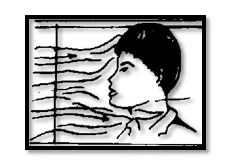
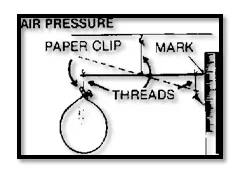



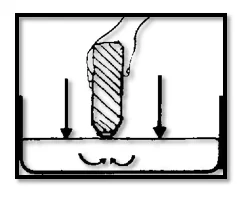

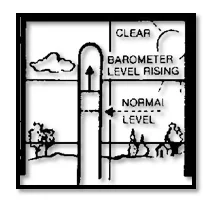
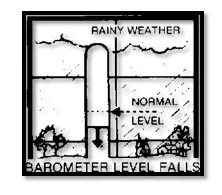
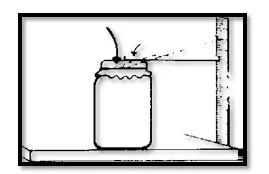
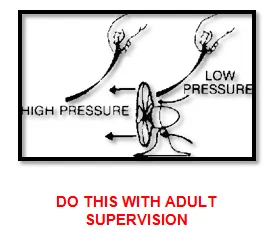
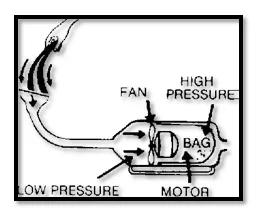
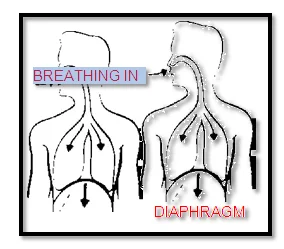
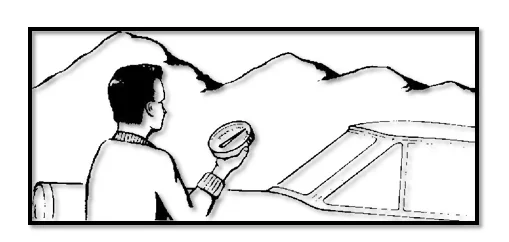






















I really enjoyed the lessons and experiments. I am in Grade 10 and we are learning about atmospheric pressure in our science class.